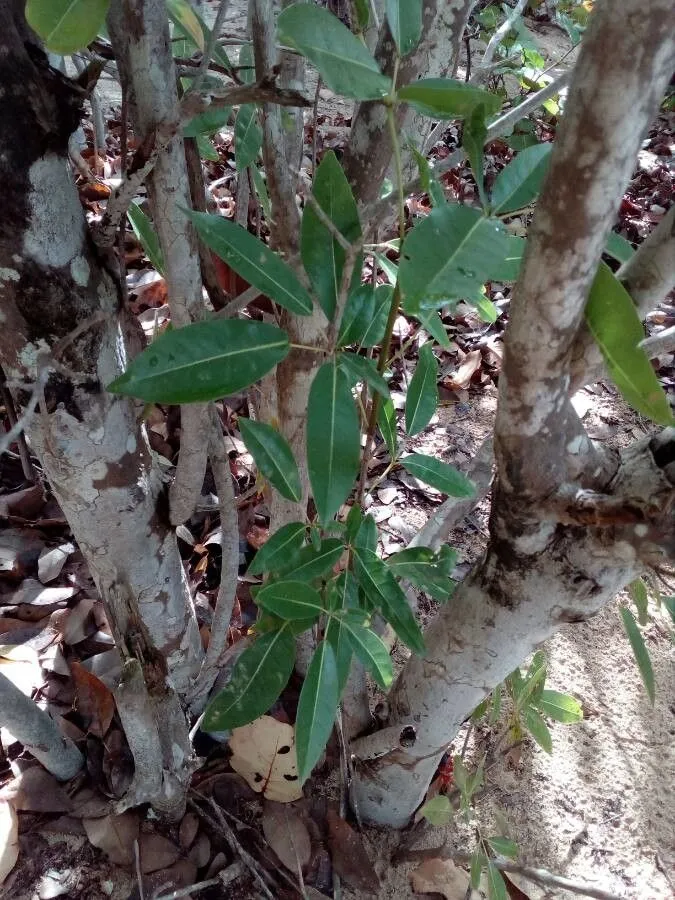
Author: (DC.) Britton
Bibliography: Ann. Missouri Bot. Gard. 2: 48 (1915)
Year: 1915
Status: accepted
Rank: species
Genus: Tabebuia
Vegetable: False
Observations: Caribbean
The White-cedar, scientifically known as Tabebuia heterophylla, is a remarkable tree species belonging to the Bignoniaceae family. This plant finds its roots deeply embedded in the rich biodiversity of the Caribbean, where it thrives abundantly.
First documented in the Annals of the Missouri Botanical Garden in 1915 by the noted botanist Britton, this elegant tree has since captured the interest of botanists and nature enthusiasts alike due to its striking appearance and ecological significance.
Tabebuia heterophylla is celebrated for its impressive floral display. The tree’s blooms are a visual feast, with delicate white to pale pink flowers that appear in clusters, often covering the tree and offering a magnificent spectacle against the island’s lush landscape. These blossoms not only add aesthetic value but also play an essential role in the local ecosystem by attracting pollinators such as bees, butterflies, and hummingbirds.
Apart from its floral beauty, the White-cedar is also valued for its sturdy wood, which has been traditionally used in cabinetry, construction, and the making of musical instruments, adding economic value to its ornamental appeal. The wood’s durability and resistance to pests make it a practical choice for various applications.
The White-cedar tree exhibits a versatile and adaptive nature, thriving in a variety of soil types and conditions commonly found in the Caribbean region. This adaptability has enabled it to become an integral component of the local flora, often found in coastal areas, providing critical habitat and food for wildlife.
In summary, Tabebuia heterophylla, or White-cedar, is a plant of significant ecological and economic importance in the Caribbean. Its enchanting flowers and durable wood make it a valuable species for both natural ecosystems and human use, reflecting the intricate connections between native flora and their environments.
Eng: white cedar, pink manjack, pink trumpet-tree, white-cedar, whitewood
Swe: grön ebenholts
Spa: roble, roble blanco
En: White-cedar, Pink manjack, Pink trumpet-tree, Whitewood, White cedar, Roble Blanco, Cuban Pink Trumpet Tree, Pink Cedar, West Indies cedar, White Wood, Roble-Prieto, Pink trumpet tree
Ar: تابوبيا متباينة الأوراق
Fr: Poirier blanc, Tabébuia hétérophylle, Poirier péi
Es: Roble, Roble blanco, Cueriduro, Roble de costa
Sv: Grön ebenholts
Taken May 6, 2021 by MaiteO (cc-by-sa)
Taken May 6, 2021 by MaiteO (cc-by-sa)
Taken Aug 10, 2021 by William Gustave (cc-by-sa)
Taken Jul 31, 2017 by richard gautier (cc-by-sa)
Taken May 6, 2021 by MaiteO (cc-by-sa)
Taken Aug 7, 2022 by Thiago Lammel (cc-by-sa)
Taken May 9, 2009 by EOL − mauroguanandi (cc-by)
Taken Jul 31, 2017 by richard gautier (cc-by-sa)
Taken Feb 19, 2021 by Deirdre Fowler (cc-by-sa)
Taken Jan 20, 2020 by Marzanna Bug (cc-by-sa)
Taken Jan 18, 2017 by Hugo SANTACREU (cc-by-sa)
Taken Jun 17, 2022 by Trap Hers (cc-by-sa)
Taken Aug 19, 2020 by Françoise quiry (cc-by-sa)
Taken Dec 8, 2007 by Tela Botanica − Liliane Roubaudi (cc-by-sa)
Taken Dec 8, 2007 by Tela Botanica − Liliane Roubaudi (cc-by-sa)
Taken Feb 21, 2017 by Tela Botanica − Liliane ROUBAUDI (cc-by-sa)
Taken May 30, 2021 by CyanDess (cc-by-sa)
Taken Nov 15, 2019 by Mohamed Attia (cc-by-sa)
Taken Feb 21, 2017 by Tela Botanica − Liliane ROUBAUDI (cc-by-sa)
Taken Feb 11, 2021 by John Boateng (cc-by-sa)
Taken Sep 14, 2019 by Ferraz Carlos (cc-by-sa)
Taken May 16, 2021 by Paul (cc-by-sa)
Taken May 15, 2022 by Marzanna Bug (cc-by-sa)
Taken Feb 21, 2017 by Tela Botanica − Liliane ROUBAUDI (cc-by-sa)
Taken Feb 21, 2017 by Tela Botanica − Liliane ROUBAUDI (cc-by-sa)
Taken May 15, 2022 by Marzanna Bug (cc-by-sa)
Taken Dec 14, 2007 by Tela Botanica − Liliane Roubaudi (cc-by-sa)
Taken Dec 14, 2007 by Tela Botanica − Liliane Roubaudi (cc-by-sa)
© copyright of the Board of Trustees of the Royal Botanic Gardens, Kew.
Growth form>: Single Stem
Growth habit>: Tree, Shrub
Growth rate>: Rapid
Ph maximum: 8.0
Ph minimum: 4.5
Family: Myrtaceae Author: (F.Muell.) K.D.Hill & L.A.S.Johnson Bibliography: Telopea 6: 402 (1995) Year: 1995 Status:…
Family: Rubiaceae Author: Pierre ex A.Froehner Bibliography: Notizbl. Bot. Gart. Berlin-Dahlem 1: 237 (1897) Year:…
Family: Sapindaceae Author: Koidz. Bibliography: J. Coll. Sci. Imp. Univ. Tokyo 32(1): 38 (1911) Year:…
Family: Asteraceae Author: A.Gray Bibliography: Pacif. Railr. Rep.: 107 (1857) Year: 1857 Status: accepted Rank:…
Family: Fabaceae Author: Medik. Bibliography: Vorles. Churpfälz. Phys.-Ökon. Ges. 2: 398 (1787) Year: 1787 Status:…
Family: Aspleniaceae Author: (Cav.) Alston Bibliography: Bull. Misc. Inform. Kew 1932: 309 (1932) Year: 1932…